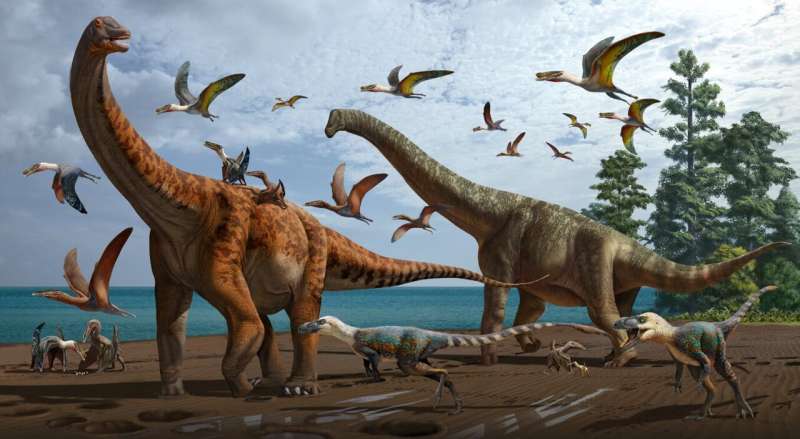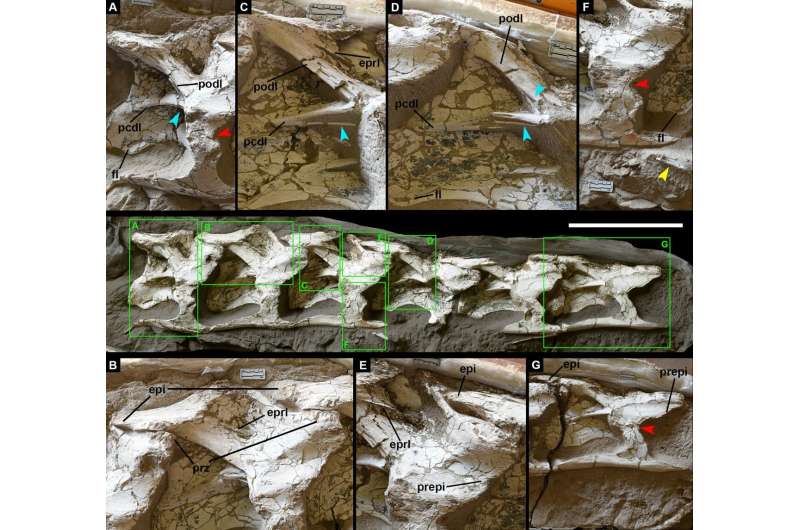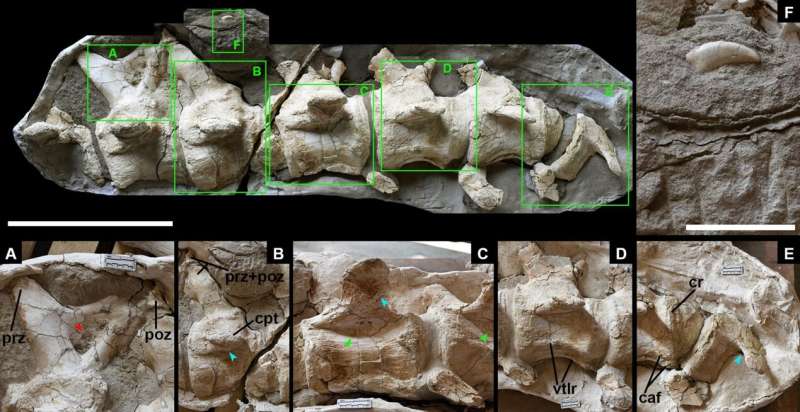Map showing the fossil site where the new sauropod dinosaur specimens were collected (A,B), and the relative positions of these three specimens (C). Credit: Nature Publishing Group
Three dinosaurs from Northwest China represent two new species and are some of the first vertebrates uncovered in the region, according to a study published in Scientific Reports. The findings shed light on sauropods in China.
Dr. Xiaolin Wang and colleagues analyzed fossil fragments (spinal vertebrae and rib cage) previously discovered in the Turpan-Hami Basin (Xinjiang, China) and dated to the Early Cretaceous (around 130 to 120 million years ago). They compared specific features of the remains (vertebrae and rib structure) to other sauropod dinosaurs from China and other localities.
The authors identified the first specimen as a new species and named it Silutitan sinensis. The authors found that some characteristics of the neck vertebrae indicate that it belonged to a family of sauropods known as Euhelopodidae, which so far have been found only in East Asia. They compared the specimen with what they believe was a closely related group of dinosaurs, or genus, (Euhelopus) and estimated that the specimen was originally over 20 meters long.
The authors named the second specimen, which they also identify as a new species, Hamititan xinjiangensis. The specimen consists of seven vertebrae from the tail, which the authors believe are the fourth to tenth in the spine. The authors conclude the shape and ridges along vertebrae suggest that it belonged to a family of sauropods known as Titanosaurs, abundant in both Asia and South America. They estimate the full specimen was 17 meters long by comparing it to what they believe to be closely related genera (Rapetosaurus and Opisthocoelicaudia).
-
Artistic rendering of the palaeoecology of the Hami Pterosaur Fauna, with Silutitan sinensis on the left and Hamititan xinjiangensis on the right. Credit: ZHAO Chuang and WANG Xiaolin
-
Holotype of Silutitan sinensis gen. et sp. nov. Credit: IVPP
-
Holotype of Hamititan xinjiangensis gen. et sp. nov. Credit: IVPP
The third specimen was limited to four vertebrae and rib fragments. The authors' analysis suggests it may be a somphospondylan sauropod, a group of dinosaurs who lived from the late Jurassic, 160.3 million years ago to the late Cretaceous, 66 million years ago.
These samples are some of the first dinosaurs reported in the Turpan-Hami Basin, increasing the known diversity of the Mesozoic reptiles found in the area. The findings also shed light on which sauropods were present in China.
More information: Wang, X. et al, The first dinosaurs from the Early Cretaceous Hami Pterosaur Fauna, China, Sci Rep (2021). DOI: 10.1038/s41598-021-94273-7
Journal information: Scientific Reports , Nature
Provided by Nature Publishing Group



























